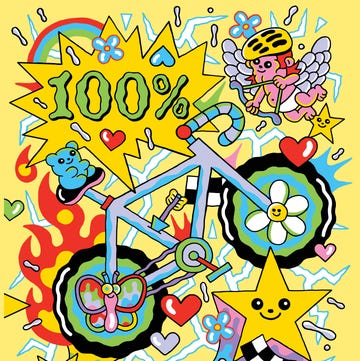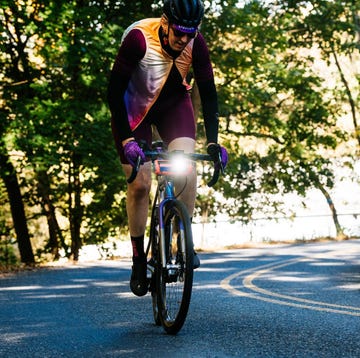Are you buying a new road, gravel, or all-road bicycle in 2025? If so, there is a strong chance your new bike will have electronic shifting since many new dropbar bikes feature this technology.
A dizzying array of bicycle models are available across several categories and sub-niches of dropbar bikes. Bike brands often add to the confusion by offering similarly equipped and priced models with Shimano Di2 or SRAM AXS drivetrains.
So, it can be tough to tell the differences and feel secure that you are making the right choice—especially if you aren’t up on the latest tech news and trends.
Three brands produce the majority of electronic groups for dropbars bikes: Shimano, SRAM, and Campagnolo. Shimano and SRAM are popular on complete bikes (virtually every new bicycle uses one of these brands). Campy is worth considering if you are building up a frameset, buying a custom bike, or upgrading your existing bike.
Di2 and AXS functioned extremely well in our tens of thousands of miles of testing on pavement and gravel. So, while you won’t go wrong with either, one might suit your needs or preferences slightly better. Finally, SRAM Red and Shimano Dura-Ace are so close in weight that the lightest group often comes down to an individual rider’s parts selection. So, do not let the component brand or groupset be your determining factor. Instead, choose the best group based on fit and function.
Why Go Electronic?
Riders embrace electronic drivetrains for good reasons. Generally, electronic systems shift more precisely, require less maintenance, and allow more customization than mechanical shifting systems. Apart from charging batteries and cleaning and lubing your chain, they are remarkably low-fuss and work astonishingly well in even the worst weather conditions.
Electronic groups are now so ubiquitous that many high-end frames do not have routing for traditional derailleur housing as the two biggest component brands (SRAM and Shimano) stopped producing premium-level cable-pull derailleurs and shifters.
Electronic shifting is a proven technology—it’s not new. Shimano launched its first Dura-Ace Di2 group over 15 years ago and Mavic had the Zap electronic group three decades ago. Electronic drivetrains were once exclusively used on brands’ top-tier race bikes. The technology took nearly a decade to trickle down to mid-priced bike models but then, riders of all abilities and cycling disciplines quickly embraced it.
Electronic Groupset Options
Shimano Di2
Now in its fourth generation, Shimano introduced cycling’s first commercially viable electronic shifting group in 2009 named Di2 (Digital Integrated Intelligence). The current iterations of Shimano’s electronic system are semi-wireless. They use a single battery inside the frame (usually in the seatpost) wired to the derailleurs and wireless brake/shift levers at the bar. Many consider Shimano’s Dura-Ace Di2 group as the benchmark in shifting speed and accuracy, braking performance, and overall weight.
Shimano offers Di2 at three levels for road bikes: Dura-Ace, Ultegra, and 105 (listed in descending order by price). The brand also makes a gravel-oriented Di2 group named GRX. All current Di2 groups are 2x12-speed systems with hydraulic disc brakes.
SRAM AXS
Of the big three drivetrain manufacturers, SRAM was the last to bring an electronic groupset to the peloton. SRAM’s AXS (pronounced “access”) groups work very well and perform at the highest levels of bicycle racing. AXS is a trendsetting group that signals the future for dropbar components—fully wireless, hydraulic disc brakes, many options, and personalization. SRAM’s AXS components are also cross-compatible with many of the brand’s mountain bike derailleurs and other parts.
AXS is a fully wireless group and features rechargeable batteries at the derailleurs. SRAM offers AXS at four levels for 12-speed systems: Red, Force, Rival, and Apex. Red, Force, and Rival are available in 1x or 2x variants; Apex is a 1x-only platform. Gravel-oriented variants are dubbed AXS XPLR and feature a 1x-only rear derailleur and wide-range cassette. A slick, new 1x13-speed Red AXS XPLR group is also available (but it only fits UDH-compatible frames). All SRAM AXS dropbar groups have hydraulic disc brakes.
Campagnolo Wireless and EPS
Historically, Campy is known for its impeccably crafted and refined road groups. While very few new bikes are equipped with Campagnolo components, we would be remiss to exclude them from the discussion since the Italian brand is an important part of cycling culture and lore.
Campagnolo currently produces two electronic shifting systems: Wireless and EPS. Wireless is the brand’s latest offering and (as the name suggests) does not use wires and has batteries mounted on the derailleurs, EPS (Electronic Power Shift) however is a completely wired groupset. Campy offers Super Record Wireless, Super Record S Wireless, and Super Record EPS 2x12 gruppos.
Mechanical and Rim Brake Options
We get it, many riders still want mechanical shifting drivetrains and rim brakes. However, the unfortunate reality is that not enough people buy these groups at the premium level to make it worth the brands’ product development and manufacturing effort. Thus, the options for high-end mechanical groups and rim brakes are limited.
Currently, Shimano’s most premium cable-actuated road groupset is 12-speed 105 and the lone offering from SRAM is Apex 1x12. Campagnolo, luckily, offers 12-speed cable pull drivetrains at three price tiers for mechanical shifting disciples and holdouts. However, only one brand sells a complete bike with a mechanical Campy drivetrain.
Brand-new, rim brake-equipped, electronic shifting bikes are virtually impossible to find. Technically, they can be made (Shimano and SRAM still offer compatible parts) but there is such low demand from riders that bike brands discontinued any new models. However, if you want to build a custom bike with rim brakes and Di2 or AXS shifting, the parts (in theory) exist.
What Brand to Choose
Buy Shimano if…
You value consistent performance: Plain and simple, Shimano Di2 drivetrains work.
Di2 always shifts smoothly and reliably, even at the lowest-priced 105 Di2 level. The combination brake/shift levers fit most hands well (riders with smaller hands often prefer them over the competition). The shift buttons (double stacked on the brake lever) have a distinct tactile feel so you can tell them apart. Shimano’s brakes are some of the best for dropbar bikes and have good power and modulation.
The Di2 system’s battery has a long life (so much that we often forget to charge our Di2-equipped bikes) but is inside your frame and hard to remove. Additionally, the battery charges from the rear derailleur. This means you need an outlet near where you store or charge your bike.
The main downside to Di2 groups is gear range options—all current offerings are 2x12 only with a maximum cog size of 34T in the rear for Dura-Ace/Ultegra/105 and 36T for GRX. If you want a 1x Di2 drivetrain you are (currently) out of luck.
Power meters are another weak point for Shimano’s groups. The brand offers one but in our testing, it showed unreliable accuracy and it is rarely equipped on new bikes. Most riders opt for a third-party solution (like 4iiii) or power pedals.
Buy SRAM if…
You like having options: There are countless ways to build or customize a SRAM AXS-equipped bike.
For several years, many riders and experts considered AXS’s shifting and braking performance a notch below its main competitor. SRAM’s latest Red AXS group changes that dynamic and puts the AXS on equal footing—and in several ways ahead—of Di2. Red’s shifting precision and speed greatly improve, particularly at the front derailleur. (While SRAM closed the gap to Shimano’s FD shifting, Di2 still has a slight edge here.) The Red brakes are best in class for the dropbar category, with increased power and improved control over the previous generation Red, and they have a leg up on Shimano’s Dura-Ace and Ultegra stoppers.
SRAM’s huge advantage comes from AXS‘s compatibility and customization. The potential combination permutations are too long to list. Want 1x? SRAM has it. Wide range cassettes? SRAM has them. A 56/43T chainring combo like ProTour racers? Power meters? Operate a dropper post? A mountain bike derailleur and cassette with road shifters (AKA a mullet drivetrain)? Wireless remote shifters? AXS is easily configurable for all of these tasks.
AXS batteries are charged off the bike on a separate charger, so you don’t need an outlet close to your bike to top them up. And while AXS batteries drain faster than Di2, they are small and light enough to carry a spare when you (or a buddy) forget to charge one before a ride.
Aside from Shimano’s slight edge on front derailleur precision, it is hard to go wrong with SRAM Red AXS; the stuff works well. SRAM’s workhorse Force and Rival AXS groups are getting a little long in the tooth—they offer similar performance to Red but are based on an older AXS platform. The brakes and levers lack the refinements of the new Red versions. Hopefully, we’ll see an update to these groups in 2025; fingers crossed.
Buy Campagnolo if…
You’re a Campy fan: We love Campagnolo as a brand but its latest Wireless groups are not at Dura-Ace or Red’s performance level.
Campagnolo is legendary. The brand has an undeniable mystique and panache. For generations of cyclists, its components carried an air of sophistication, beauty, and refinement. Riding Campagnolo Super Record had a certain cool factor that signified you were “in the know.”
Unfortunately, Campy’s new Super Record Wireless and Super Record S Wireless groups are not up to snuff for most performance-oriented road riders (the brand lacks an electronic shifting group for gravel use). The shift lever operation is awkward to use. Campy removed the thumb shifter for a stacked button set-up that lacks a tactile feel distinction between the two buttons. Additionally, the front derailleur performance decreased from the wired EPS group. It now shifts slowly and sometimes not at all.
Disc brake performance and lever shape were always strong points for Campagnolo’s EPS groups. While both perform sufficiently for the new Wireless groups, they are not at the level of Red or Dura-Ace. Campy offers a power meter for its Super Record Wireless group with a claimed one percent accuracy. Unfortunately, it costs double that of a Red or Dura-Ace power meter-equipped crankset.
As Senior Editor Matt Phillips stated about Campy, “I’m left feeling that Campy’s Super Record is reduced to a rich person flex: Something you buy simply to say you spent more than anyone else.” Hopefully, Campagnolo’s Cofidis partnership aids its product development and gets the brand back on terms with its main rivals.
Our Picks for Riders
General Road Riding
Toss up: Shimano or SRAM.
You cannot go wrong with either for general-purpose road cycling. Di2 and AXS are proven and reliable for road and all road riding duties. We will happily ride any Shimano or SRAM electronic shifting group on our personal bikes.
General Gravel Riding
Winner: SRAM
SRAM AXS’s equipment and price options make it the clear leader for gravel riders. SRAM offers electronic shifting across a range of prices. AXS’s cross-compatibility makes upgrades, replacements, and repairs very easy.
Road Racing
Toss up: SRAM or Shimano.
While SRAM has a slight edge for the options and customization racers crave, Shimano‘s shifting and braking performance is also top-notch. And hey, if Tadej Pogačar can win with Dura-Ace, how can we really argue?
Gravel Racing
Winner: SRAM
The new Red AXS XPLR is the benchmark groupset for gravel racers. Red’s 13-speed cassette offers a wide gear range and the brakes are superb on dirt. Force AXS XPLR and Rival AXS XPLR 12-speed groups are good options for gravel racers on a tighter budget. However, they do not have the wider gear range, direct mount derailleur interface, or the braking performance of Red AXS XPLR.
Upgrading a Bike
Winner: Varies
The winner for this category depends on the bike or frame you are upgrading and what components you seek to carry over with an upgrade. Our advice is to consult with your local bike shop about your bike’s component compatibility. Then, use our recommendations above to guide your electronic groupset selection.
Another option for those seeking to upgrade their existing bike to electronic shifting is WheelTop’s EDS-TX group. WheelTop isn’t a household name in bike components (yet), however, Bicycling Dan Chabanov found the brand’s drivetrain performed well in testing. The group’s compatibility with almost any road cogset (from 3- to 14-speed)—and availability in disc and rim brake configurations—makes it a compelling choice for riders upgrading an older 8- or 9-speed bicycle.
As Deputy Editor, Tara Seplavy leads Bicycling’s product test team; after having previously led product development and sourcing for multiple bike brands, run World Championship winning mountain bike teams, wrenched at renowned bicycle shops in Brooklyn, raced everything from criteriums to downhill, and ridden bikes on six different continents (landing herself in hospital emergency rooms in four countries and counting). Based in Easton, Pennsylvania, Tara spends tons of time on the road and trail testing products. A familiar face at cyclocross races, crits, and bike parks in the Mid Atlantic and New England, on weekends she can often be found racing for the New York City-based CRCA/KruisCX team. When not riding a bike, or talking about them, Tara listens to a lot of ska, punk, and emo music, and consumes too much social media.

































